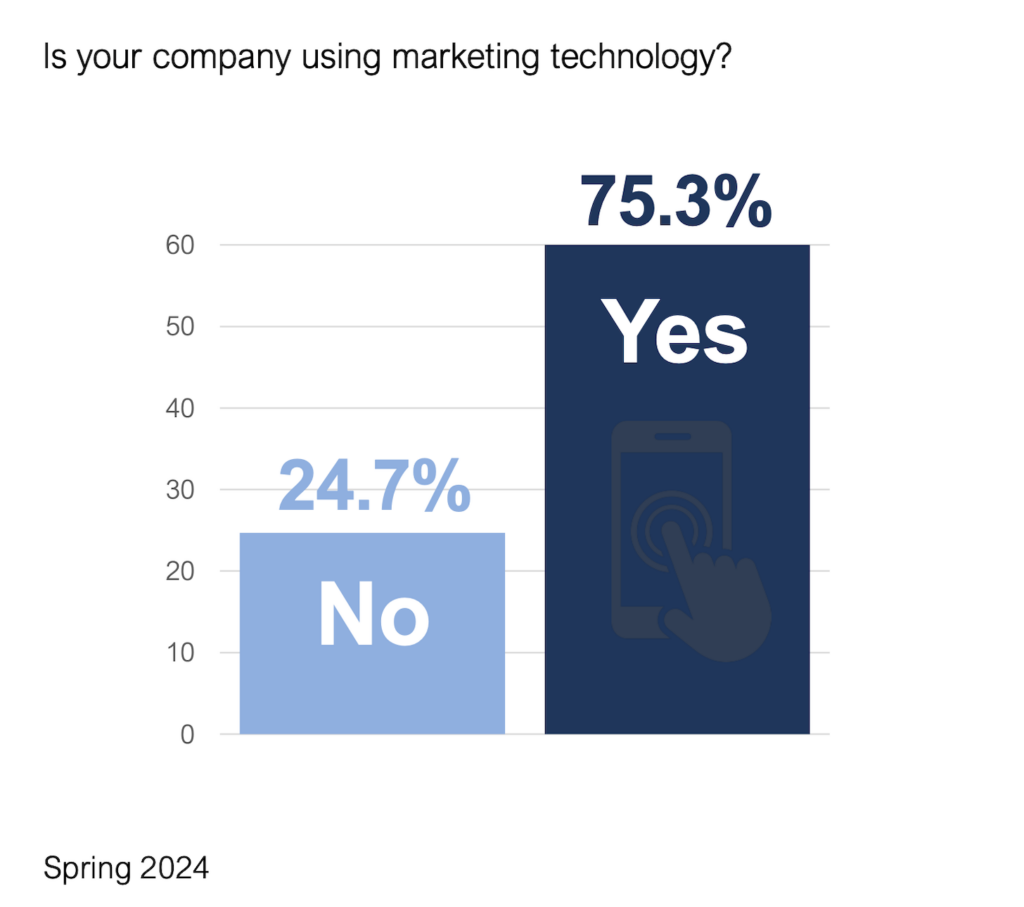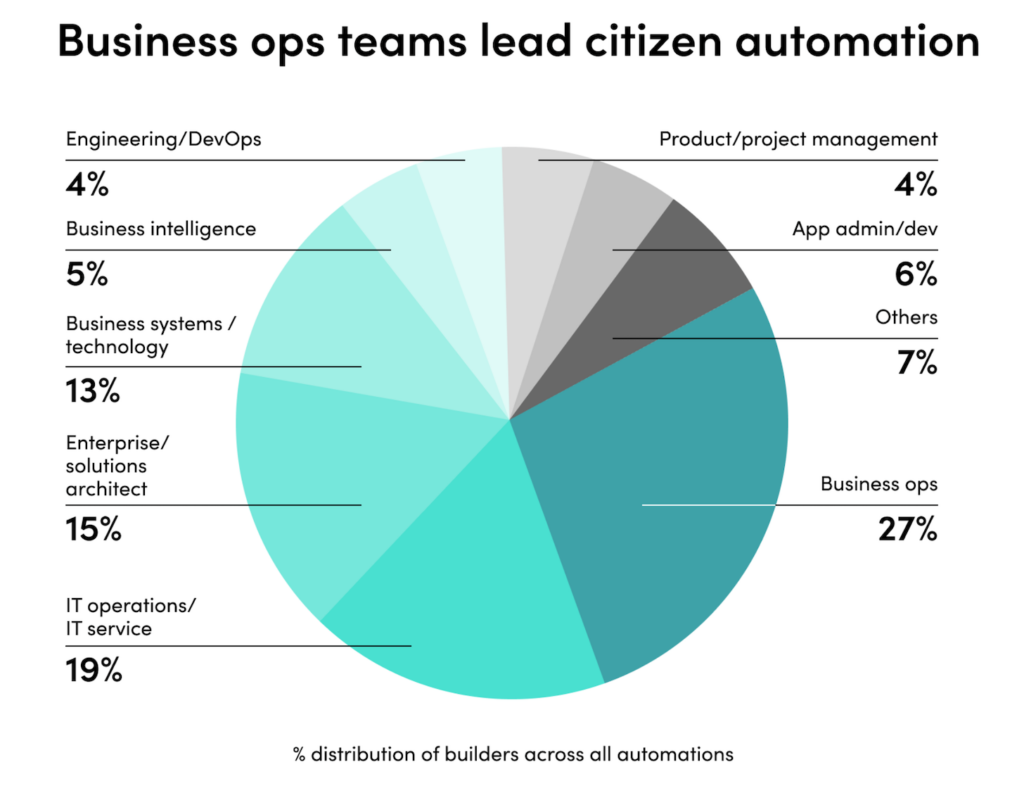The following is a guest article by Sangram Vajre, co-founder and CMO of Terminus, founder of the #FlipMyFunnel movement, and author of Account-Based Marketing For Dummies. He’ll also be a featured speaker at the MarTech Conference in San Francisco, May 9-11.
Editorial update: It turns out that there’s actually a martech company named Allbound, which I should actually write as Allbound™, since they have a trademark on their name. I hope this added notice is sufficient for the article below to remain uncontested, as I think it offers a valuable way of reframing marketing and sales collaboration. But perhaps the merging of inbound and outbound should be called “everybound” or “anybound” or “unibound” or, well, you get the idea. Unless any of those are martech companies too… (what are the odds?).
We all know the B2B marketing technology landscape continues to grow. Gartner predicts that 2017 will be the year the CMO will outspend the CIO in terms of technology infrastructure. These days, the typical B2B marketing team has at least a dozen tools in their #MarTech stack: a CRM, marketing automation, a CMS, several social media applications, video, webinars, a creative suite, and so on. You see where I’m going here.
The point is: there are thousands of tools to measure the success of your marketing efforts, web traffic, number of leads generated — you name it, you can probably find some piece of software to help measure it.
So with all of these tools at marketers’ fingertips, how are you measuring exactly what’s working on different channels? In this ever-evolving martech world, I think there’s only one metric that every marketing team should measure: revenue.
Think about it: if you’re measuring the number of clicks on an e-mail, social followers, and new leads generated, but you’re not paying attention to key performance indicators (KPIs) like the number of opportunities created for sales and how much revenue is in your pipeline, then what’s the true ROI of all those martech tools you invested in?
Almost every B2B company has “Sales & Marketing” as one line item on its P&L. If sales is measured by only one metric, revenue performance, then marketing should be as well.
If you’re a SaaS business looking at your company’s top three metrics for success, the magic number is cost of customer acquisition (CAC) that shows the value of your business is revenue + churn. Here’s a great post from OpenView Labs on the topic. If you’re in the range of the CAC, you know you’re running your business responsibly with lots of opportunity.
We know it doesn’t matter how good your marketing is if the revenue number isn’t going up. It doesn’t matter if marketing rocks if customer churn is high. Therefore, it’s a waste of time counting inbound and outbound activities — especially if you’re trying to do account-based marketing (ABM).
Switching to “Allbound”
Now that marketing is focused on revenue and is working with the same list of accounts as the sales team, then the way to measure success is allbound, not inbound and outbound. It’s about looking at all the activity with various contacts in your target accounts.
At my own company, our B2B marketing and sales team recently went through the process of switching to allbound. We originally had two types of demos sourced: inbound and outbound. We found that our sales development (SDR) team was tagging all demo requests that came in from form completions as “outbound” if they had any type of touch on that account.
We needed to find a way to measure demos that represented the influence both sales and marketing had for progressing target accounts further through the buyer’s journey. After much discussion in our “smarketing” (that’s sales + marketing) meetings, the “allbound” metric was formed.
Our team attributes an allbound account as a opportunity that both sales and marketing influenced. Now, all of our account-based marketing campaigns fall into our allbound category because smarketing is aligned on a best-fit set of accounts.
Defining Allbound Criteria
Essentially, allbound refers to existing accounts that are owned and flagged in your CRM that haven’t had activity in the last 60 days. An account that is new to the system (less than 30 days old) and just came to our website, engaged with us at an event, attended a partner webinar, etc., is also marked allbound.
Existing accounts that were already marked inbound or outbound in CRM did not get changed to allbound, especially if they’re over 60 days old. If the account is less than 60 days old when a demo is scheduled, however, we now mark it as allbound.
Inbound/Outbound vs. Allbound
Since marketing and sales are measured as one line item, then the efficiency should be measured on one number: revenue. Tied to the hip and incenting each other to drive revenue. It makes sense to have a common metric that allows you to measure success. Inbound and outbound are two different metrics, it creates more diversion with alignment.
Because marketing and sales are working together to target various contacts in each target account, you can’t call it just “inbound” or “outbound” anymore. Instead, it’s truly “allbound” because of the combination of marketing and sales touches.
However, I want to note that we haven’t totally eliminated outbound. If the account is part of a cold outreach that our sales development reps or account executives are calling and emailing and these accounts have never been touched by marketing through an event, retargeting, form completion, etc., then those would be outbound. If sales schedules a demo without the contact ever having a “touch” from marketing, we want to reward the AE and/or SDR for going the extra mile to get that demo.
But allbound is not just for demo requests; it’s for all of our ABM campaigns that we collaborate on with sales. Marketing plays a part in providing “air cover” materials, emails, advertising, and direct mail while sales is doing their traditional cadences through emails, calls, and social outreach.
How to Do Allbound for Account-Based Marketing
The primary tool we use for measuring success is Salesforce, however, we also use Bizible for campaign attribution. Also, we look at performance metrics on the individual tactics used in our Allbound campaigns using SalesLoft’s Cadence for email opens, clicks, and replies, and Vidyard for personalized videos. Other martech in our allbound stack includes Pardot, PFL, Sigstr, Uberflip, LinkedIn, and our own account-based marketing platform at Terminus.
Another big conversion point where ABM tactics are used to engage accounts is events. Our
marketing team helps identify the target accounts we want to attend the event, or if we get a list prior to an event we’re sponsoring then we scrub the list for accounts that meet our ideal customer profile (ICP) criteria. Marketing works to “warm up” the account with advertising promoting the event, in addition to sending emails, while sales might reach out with personalized videos.
At the same time, sales builds out a full account profile with additional contact information. For our allbound strategy, we want at least three contacts for each account. After all, there’s typically more than one person involved in a B2B purchase decision. We use this strategy for both in-person events (trade shows, conferences, roadshows, and meetups) and online events like webinars and virtual summits.
Lessons Learned with Allbound
With any new change in process, particularly one that challenges the status quo, there’s always pushback. In most B2B marketing organizations, any form completion is considered inbound. We’re changing the way of looking at it from an account-based approach instead of the traditional lead-based perspective. A form completion doesn’t necessarily equal a sale. Plus, more than one contact in the account can fill out a form throughout various stages of the buyer’s journey.
Getting the whole smarketing team on board with tracking and measuring the same way can be tricky. There’s specific coding in CRM to determine the source on all of these activities, which definitely helps us measure our results. Human error is inevitable, though, so we’re having to triple check to ensure everything is correctly inputted for the allbound metrics we’re reporting.
Closing Thoughts
Marketing and sales alignment is strengthened when we work together towards the same goals. We know the game plan for activities and how to measure account progression, so while sales does a lot of the heavy lifting with calling and email, marketing is providing air cover. Sales and marketing are not competing against each other but rather working together as a single smarketing team.
Plus, marketing doesn’t have to rely on vanity metrics like marketing leads qualified (MQL). The new quarterly goal for marketing is the number of demos set from best-fit accounts that meet our ICP. With allbound, we’re really trying to look at the big picture.
I think ABM can stand for account-based marketing as well as “allbound building momentum.”
Martech innovation has shown no signs of slowing down. Having the right tools helps you do ABM at scale, and allbound helps you track those efforts clearly and concisely, looking at the metric that really matters: revenue.
DON’T MISS A CHANCE TO HEAR SANGRAM SPEAK. He will be presenting at the MarTech Conference in San Francisco, May 9-11, along with Nate Hurst of Domo to share the experience of Orchestrating an ABM Campaign with Advertising, Content & Direct Mail. Register now for the “beta” rate discount on tickets to guarantee your seat.





There something very important missing from this “allbound” approach — partners. Indirect sales. The lines between direct and indirect are blurring more every day. There’s an entire sales ecosystem in every company, and partners – referral, reseller, even affiliate, are a big part of what it means to grow with allbound. 70% of global goods and services are sold indirectly. That’s a lot of revenue to leave off the table.
https://www.saleshacker.com/adding-partners-abm-playbook/
Utilizing an Allbound methodology with partners to increase ABM efficiency!
Customer engagement is much more important than just Marketing. Just unifying marketing is not enough. ALL customer processes should be unified. When empowered then with AI you are all set 🙂
Register for PegaWorld at http://www.pega.com/events/pegaworld